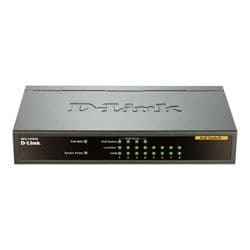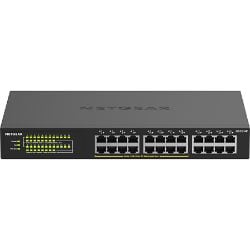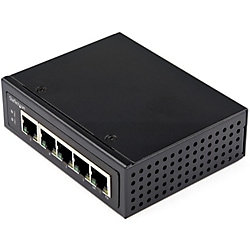August 09, 2022
Fast Ethernet vs Gigabit Ethernet: Which Data Protocol is Right for You?
What is Fast Ethernet? What is Gigabit Ethernet? Gigabit Ethernet is about ten times faster, but how do you know which is right for your business or enterprise?
Which Ethernet Data Protocol is Right for You?
Ethernet is one of the most common computer networking components. It is the traditional technology used in wired local area networks (LANs) for enabling communication between devices. A LAN, or Ethernet network, is a network of computers, printers and other electronic devices located in a room, house, office, building or campus. An Ethernet cable is the physical wire over which the data travels.
Fast Ethernet (FE) and Gigabit Ethernet (GE) are the two types of Ethernet that are used most frequently. There are a few differences between them: The main difference is the maximum data transmission speed and the coverage area. Depending on your needs and situation, whether you need to set up a network for a home office or a large business, there are several factors to consider in choosing between Fast Ethernet and Gigabit.
Fast Ethernet vs. Gigabit Ethernet
Fast Ethernet is the computing networking term for a LAN transmission standard that provides a data transfer rate of 100 megabits per second. Developed in 1995, FE was the fastest network connection of its time. FE is simple to configure and can cover distances up to 10km. It has several PHY layers and can support both full duplex and half duplex modes. FE's fast transfer speeds allow it to download, upload and process massive amounts of data with little trouble.
Gigabit Ethernet was introduced in 1999, just four years after Fast Ethernet, but it didn't gain popularity until 2010 because of the increased demands of the internet, electronic devices and their users. GE carries traffic at the rate of 1000 Mbps (1 Gbps) per second, making it 10 times faster than FE. Most Gigabit Ethernet connections are still even faster than Wi-Fi delivered over a wireless router, thanks to the reliability of the cable. GE is more difficult to configure than FE, runs on half duplex and full duplex modes and has a maximum length of up to 70km, making it ideal for large businesses and universities. It can handle the intense needs of today's electronic devices and applications.
Here are some of the key differences between FE and GE:
Speed
FE runs at the maximum speed of 100 Mbps while GE offers speeds up to 1 Gbps, which is 10 times faster. While GE offers a significantly faster speed than FE, it’s important to note that data transfer using GE usually tops off around 900 Mbps and that 1000 Mbps is an absolute maximum.
Configuration
FE is simpler to configure. GE often requires a high-compatibility fiber switch, which makes configuration more complicated and error-prone.
Coverage
FE can cover distances up to 10km while a gigabit-capable network spans 70km. This makes GE preferable for networks that need to cover a large amount of ground, such as those powering universities or other big companies.
Price
FE is cheaper than GE, and it is easy to upgrade to FE from the slowest Standard Ethernet. The process of upgrading to a gigabit network from Fast Ethernet is more complex and expensive.
Devices
GE requires specifically designed network devices, such as a Gigabit Ethernet switch, that can support the standard 1000 Mbps data rate. At this point, most modems and routers are equipped to run using GE. In most cases, GE can work well using a regular Ethernet cable that meets the CAT5e or CAT6 cabling standards. While FE has historically been easier to set up, technology is now catching up to the point where GE requires fewer pieces of specialized equipment to work.
The Right Choice for Your Business
If you are simply setting up a home network or small office network and don't venture beyond the common electronic devices and software, Fast Ethernet will be able to handle your needs. But if you are a growing or established business with numerous employees and complex tools and applications, Fast Ethernet may not be fast enough. With today's web-based applications, video and data-intensive tools, you should consider an upgrade to a Gigabit Ethernet network.
Whether you're just building your network or looking to upgrade, there are several benefits for choosing Gigabit Ethernet over Fast Ethernet:
Enhanced Productivity
GE is ten times faster than FE. If your employees are sitting around because applications won't respond and files won't load, you are losing time and money. GE improves employee productivity by providing quicker access to critical business applications and faster file transfer times.
Improved Network Responsiveness
The more employees, technologies and applications you have on your network, the more bandwidth you require to keep them running on all cylinders. GE provides the performance necessary to run multiple applications simultaneously by numerous users on multiple devices without fear of bottlenecks, ensuring that your network is running consistently.
Ability to Add New Technologies
As your business grows, you will be looking into new technologies to keep things running efficiently and effectively. You want to stay competitive and reduce costs, and for this reason you might look to add advanced applications such as web conferencing, streaming video and more — all technologies that run on the network and require more bandwidth to run effectively. GE provides that and delivers the quality of service needed to ensure that videos are displayed in a smooth, continuous stream and that your IP telephony calls offer clear sound without jitter or feedback.
Investment Protection
Every dollar counts as you try to grow your corporation, so that's why you should invest the time and energy into GE right from the outset. FE might save you money at the beginning, but the upgrade process and additional hardware cost could come back to bite you in the end when you need what GE has to offer.
Both FE and GE are sufficient to handle normal user requirements, but as your needs expand, your company grows and technology becomes more advanced, you will probably require the speed and reach of GE.



